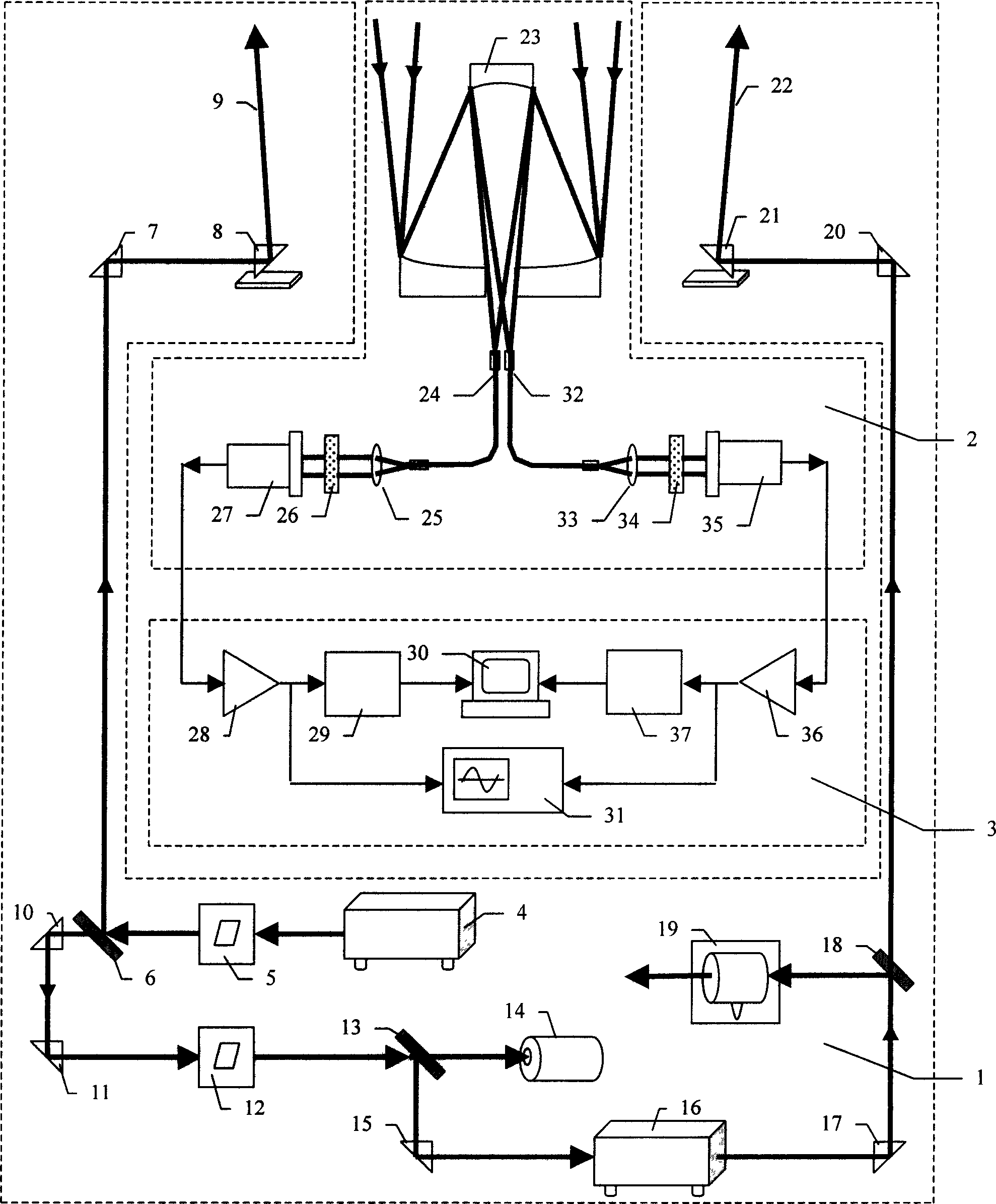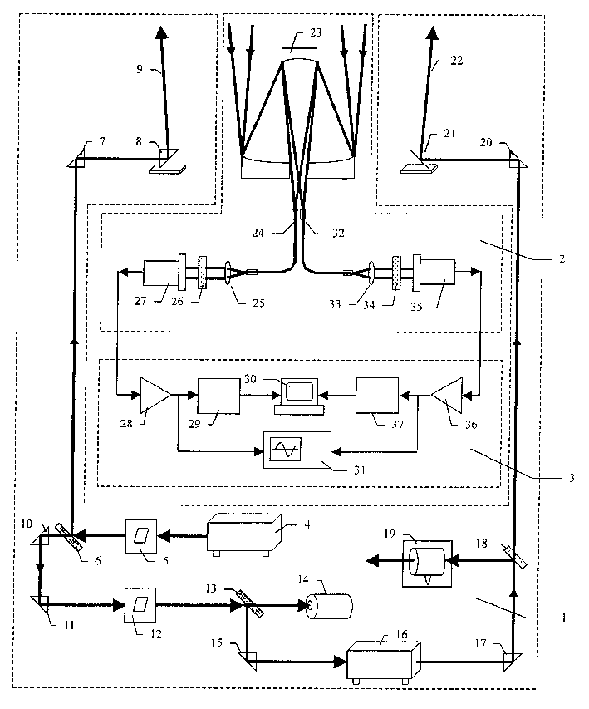Double wave length liquid altitude deection laser radar
A lidar, high-altitude detection technology, applied in radio wave measurement systems, measurement devices, and electromagnetic wave re-radiation, etc., can solve problems such as unscientific and reasonable solutions, increase in manpower, funds, venues, and technical difficulties. Wide detection height range, excellent signal-to-noise ratio, economical and effective results
- Summary
- Abstract
- Description
- Claims
- Application Information
AI Technical Summary
Problems solved by technology
Method used
Image
Examples
Embodiment Construction
[0015] The dual-wavelength high-altitude detection laser radar of the present invention will be further described below in conjunction with the accompanying drawings.
[0016] The present invention is mainly composed of a laser transmitter 1 , an optical receiver 2 and a signal detection processor 3 .
[0017] Laser transmitter 1 is mainly composed of yttrium aluminum garnet (Nd:YAG) laser 4, first frequency multiplier 5 and second frequency multiplier 12, first two-color intense beam splitter 6 and second two-color intense beam splitter 13, monochromatic strong light beam splitter 18, the first turning prism 7, the second turning prism 10, the third turning prism 11, the fourth turning prism 15, the fifth turning prism 17 and the sixth turning prism 20, the first optical The transmitter 8 and the second optical transmitter 21 are composed of a dye tunable laser 16 , a sodium atom spectroscopy device 19 and a light absorber 14 . The dye tunable laser 16 is composed of one-sta...
PUM
 Login to View More
Login to View More Abstract
Description
Claims
Application Information
 Login to View More
Login to View More - R&D
- Intellectual Property
- Life Sciences
- Materials
- Tech Scout
- Unparalleled Data Quality
- Higher Quality Content
- 60% Fewer Hallucinations
Browse by: Latest US Patents, China's latest patents, Technical Efficacy Thesaurus, Application Domain, Technology Topic, Popular Technical Reports.
© 2025 PatSnap. All rights reserved.Legal|Privacy policy|Modern Slavery Act Transparency Statement|Sitemap|About US| Contact US: help@patsnap.com


